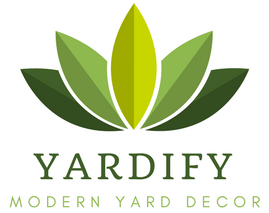Planter selection should consider not only the planter's location and the needs of the plants it will hold, but also the quality and environmental impact of the materials and construction details in relation to your price value expectations, as well as visual aesthetics.
Planters above grade must avoid poured-in-place concrete planters or penetration of roof and terrace membranes, which can cause structural damage to commercial and residential buildings.
After reading this in-depth blog, you'll be able to choose the best planter for your project by understanding how different planter designs, materials, and functions make it simple to choose the best options. This will help you avoid costly and embarrassing career mistakes if you're a landscape professional, architect, general contractor, condo manager, or purchasing agent.
Yardify.com offers a three-part engineered landscaping system that includes proprietary anodized aluminum structural extrusions, an internal aluminum frame that supports a wood or maintenance-free, eco-friendly recycled plastic lumber outer planter box, and a tough 100 percent recycled plastic waterproof liner with advanced drainage.
Liners not only prevent the wooded boxes from rotting and solar gain from steaming the root ball, but they also conceal labor-saving drip irrigation systems and lighting wiring.
It's also more flexible than fiberglass, making it less likely to crack. The material does not show chips and dings in the same way that fiberglass does because it is a solid color throughout. It also resists graffiti because it repels paint and can be sanded or cleaned with a variety of paint strippers. For mobility, hidden aluminum caster wheel bases can be built in.
Planter Selection Challenges and Solutions: Finding any large planters with substantial surface area, let alone contemporary planters in a variety of styles and sizes that provided protection from soil overheating on south- and west-facing exposures, water drainage control, stability in high winds, ease of watering, and portability, was one of the most difficult challenges I faced in sourcing large planters with substantial surface area.
Large surface area: It was surprising how difficult it was to find large planters, especially ones that were attractive.
While there are numerous pots of various sizes, they do not provide the large surface area required for planting trees, hedges, or vines to provide the shade and privacy screening that I desired.
Aesthetics: Each type of construction material has advantages and disadvantages that vary greatly depending on the construction and design.
Planters with large surface areas that I found had a more institutional or commercial design and were better suited to a parking lot. They simply lacked the design characteristics of architectural planters for a residential project. Restaurants that are opening sidewalk cafes or expanding into their parking lots use our high-quality, easy-to-maintain products to reflect the quality of their food and atmosphere.
Variety of dimensions and materials: None of the ready-made large planters I found were available in custom sizes or materials to fit all of the niches and different areas where I needed planters. That's why we built our shop so that our craftsmen can build to any size and never charge a design or custom fee for a customer's solution, whether it's one planter for a home owner or 100 for a major development. Because of our design's modular nature and short lead times, there are no costly change orders at the end of the project if the as-built dimensions don't match the architect's drawing, saving budgets and reputations.




